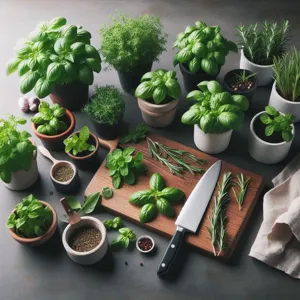As the sun shines brightly and the temperatures rise, there’s nothing quite like sipping on a refreshing homemade drink to quench your thirst and revitalize your spirit.
Whether you’re lounging by the pool, hosting a backyard barbecue, or simply enjoying a quiet afternoon on the porch, the right beverage can elevate any occasion. In this blog post, we will explore a collection of irresistible homemade drink recipes that are not only easy to make but also bursting with flavor and creativity. From fruity mocktails and zesty lemonades to soothing herbal infusions and decadent smoothies, there’s something here for everyone to enjoy. Join us as we embark on a delightful journey of crafting refreshment, where each sip promises to transport you to a world of blissful relaxation and invigorating taste. Cheers to the art of homemade drinks!
1. Introduction: The Joy of Homemade Drinks

In a world where convenience often trumps creativity, there’s something uniquely satisfying about crafting your own beverages at home. Homemade drinks not only allow you to control the ingredients—ensuring freshness and quality—but also provide a creative outlet that can be both fun and rewarding. Whether it’s a hot summer day calling for a refreshing iced tea or a chilly evening begging for a cozy hot chocolate, the joy of preparing your own drinks goes beyond mere sustenance; it becomes an experience.
Imagine the simple pleasure of waking up to the invigorating aroma of freshly squeezed citrus or the soothing fragrance of herbs steeping in hot water. These moments invite you to engage your senses, offering a chance to experiment with flavors, textures, and presentations. Perhaps you’ll try blending vibrant fruits into a smoothie that bursts with color and nutrition, or concocting a sophisticated cocktail that rivals those found in upscale bars. The possibilities are endless, limited only by your imagination and the ingredients at hand.
Moreover, homemade drinks create opportunities for connection and celebration. Picture gathering with friends for a weekend brunch, each of you sipping on a signature mocktail or a spiced chai that you’ve meticulously crafted. These shared moments, punctuated by laughter and clinking glasses, become cherished memories that linger long after the last drop is consumed.
Join us as we explore a collection of irresistible recipes that will inspire you to roll up your sleeves and embrace the art of drink-making. From thirst-quenching juices to comforting warm brews, you’ll discover that crafting your own beverages is not just about quenching thirst—it’s about creating joy, nurturing relationships, and celebrating the simple pleasures of life.
2. Classic Refreshing Lemonade: A Timeless Recipe
When the sun shines brightly and the temperatures rise, nothing quite beats the classic charm of homemade lemonade. This timeless drink is the epitome of refreshment, balancing sweet and tart flavors perfectly. To craft your own batch of this beloved beverage, you’ll need just a few simple ingredients: fresh lemons, granulated sugar, and cold water.
Start by squeezing the juice from several ripe lemons, aiming for about one cup of the bright, tangy liquid. The fragrance of freshly squeezed lemon juice is invigorating, promising a delightful burst of flavor in every sip. Next, in a separate bowl, combine the lemon juice with sugar, adjusting the amount to your taste. The sugar not only sweetens the drink but also helps to highlight the lemonade’s zesty notes.
Once the sugar is fully dissolved—this might require a little stirring or even a gentle heat if you prefer a quicker method—mix in about four cups of cold water. This dilution is crucial; it transforms the concentrated lemon juice into a refreshing drink that is neither overly sweet nor too tart. For an extra touch, consider adding slices of fresh lemon and a handful of mint leaves to the pitcher. This not only enhances the visual appeal but also infuses a delightful herbal aroma that elevates your lemonade to new heights.
Serve it over ice in tall glasses, garnishing with a sprig of mint or a colorful straw for that quintessential summer vibe. This classic refreshing lemonade is not just a drink; it’s an experience that brings back memories of warm afternoons, backyard barbecues, and shared laughter with friends and family. Whether enjoyed on a hot day or during a cozy gathering, this timeless recipe is sure to quench your thirst and leave everyone craving more.
3. Zesty Citrus Spritzer: A Burst of Flavor

When the sun blazes overhead and the temperature rises, nothing beats the invigorating taste of a Zesty Citrus Spritzer. This homemade drink is a refreshing symphony of flavors, combining the tangy brightness of citrus fruits with the effervescence of sparkling water. It’s the perfect companion for lazy afternoons, backyard barbecues, or any occasion that calls for a burst of refreshment.
To craft this delightful beverage, start by juicing a medley of your favorite citrus fruits. Think juicy oranges, tart lemons, and vibrant grapefruits. The key is to strike a balance between sweet and tangy, so feel free to experiment with different combinations. For an extra layer of flavor, consider adding a splash of lime juice—its sharpness enhances the overall zestiness of the drink.
Next, take your freshly squeezed juice and mix it with chilled sparkling water. The bubbles add a playful effervescence that elevates the entire experience, making each sip feel like a fizzy celebration. For a touch of sweetness, you can stir in a bit of honey or agave syrup, adjusting to your taste preference.
To elevate your Zesty Citrus Spritzer even further, garnish it with slices of citrus fruits and a sprig of fresh mint. The vibrant colors not only make the drink visually appealing but also infuse it with subtle herbal notes. Serve it over ice in a tall glass, and watch as your guests’ eyes light up with anticipation.
With each sip of this invigorating spritzer, you’ll feel the cool burst of flavor wash over you, making it a quintessential drink for any warm day. Whether you’re lounging by the pool, hosting a garden party, or simply enjoying a quiet moment at home, the Zesty Citrus Spritzer is sure to become a favorite in your collection of homemade drinks. Cheers to refreshing moments and the magic of citrus!
4. Fruity Infused Water: Hydration with a Twist
When it comes to staying hydrated, plain water can sometimes feel a bit lackluster. That’s where fruity infused water comes in—a colorful and flavorful alternative that not only quenches your thirst but also adds a delightful twist to your daily hydration routine. This refreshing drink is incredibly easy to prepare and allows you to experiment with a variety of fruits, herbs, and even vegetables, making it a versatile choice for any palate.
To get started, choose your favorite fruits—think vibrant strawberries, zesty lemons, succulent peaches, or juicy watermelon. The key is to select ingredients that complement each other, both in taste and visual appeal. For an extra layer of flavor, consider adding fresh herbs like mint or basil, which can elevate the drink with a refreshing aroma.
Begin by slicing your chosen fruits into thin pieces to maximize their surface area, allowing the flavors to infuse into the water more effectively. Fill a pitcher with cold filtered water, toss in the fruits (and herbs, if using), and let the mixture sit in the refrigerator for at least an hour. This chilling period allows the flavors to meld beautifully, creating a drink that is not only hydrating but also bursting with natural sweetness.
As an added bonus, fruity infused water is a fantastic way to reduce waste—if you have leftover fruits from a previous recipe or meal, this is the perfect opportunity to put them to good use. Plus, you can continually refill the pitcher with water throughout the day, ensuring that you reap the benefits of your carefully chosen ingredients long after they’re initially added.
Serve your fruity infused water in clear glasses to showcase its vibrant colors, and garnish with a sprig of fresh herbs or a slice of citrus for that extra touch of elegance. Whether you’re hosting a summer barbecue, enjoying a quiet afternoon on the porch, or simply looking to spice up your daily hydration, fruity infused water is a deliciously refreshing choice that will keep you reaching for more. Cheers to health and hydration with a twist!
5. Iced Herbal Teas: Cooling and Calming

As the sun blazes overhead and the heat envelops us, there’s nothing quite as refreshing as a chilled glass of iced herbal tea. Not only does it provide a soothing escape from the sweltering temperatures, but it also offers a plethora of flavors and health benefits that can lift your spirits and cool your senses. The beauty of iced herbal teas lies in their versatility; whether you prefer the floral notes of hibiscus, the earthy undertones of rooibos, or the crispness of mint, there’s an herbal concoction just waiting to be brewed.
To craft your perfect iced herbal tea, start with your chosen herb. Steep a handful of dried herbs or a selection of fresh leaves in boiling water for about 5 to 10 minutes, allowing the flavors to fully infuse. For a touch of sweetness, consider adding a drizzle of honey or agave syrup while the tea is still warm, as this will help dissolve the sweetener evenly. Once cooled, pour the tea over ice, and for an extra burst of flavor, garnish with fresh fruit slices or a sprig of mint.
Imagine sipping on a refreshing glass of hibiscus tea, vibrant in color and tangy in taste, adorned with slices of juicy lime and a hint of sweetness—a perfect complement to a sunny afternoon. Or perhaps a calming chamomile and lavender blend, served chilled and garnished with delicate edible flowers, which not only looks stunning but also invites tranquility into your day.
Iced herbal teas can also be a wonderful base for creative mocktails. Mix your chilled tea with sparkling water for a fizzy treat, or combine it with fresh fruit purees for a refreshing twist. The possibilities are endless, and each sip is a reminder that homemade beverages can be simple yet elegant, providing a delightful respite from the heat while indulging your taste buds in a world of flavor. So, why not brew a batch today and explore the cooling and calming effects of iced herbal teas?
6. Sparkling Berry Punch: Perfect for Gatherings
As the sun dips below the horizon and the air fills with laughter, there’s nothing quite like a vibrant bowl of Sparkling Berry Punch to set the mood for your gathering. This delightful concoction bursts with the sweetness of fresh berries and the effervescence of sparkling water, creating a refreshing drink that appeals to both young and old alike.
To craft this enchanting punch, start with a medley of ripe strawberries, plump blueberries, and tart raspberries. Their vibrant colors not only enhance the visual appeal of your drink but also infuse it with a symphony of flavors. Begin by muddling the berries gently in a large punch bowl to release their juices, creating a beautiful base that captures the essence of summer.
Next, add a splash of freshly squeezed lemon or lime juice to balance the sweetness and elevate the flavor profile. This zesty kick will invigorate the palate, making each sip a delightful experience. To sweeten the deal, incorporate a simple syrup made from equal parts sugar and water, gently simmered until dissolved. Adjust the sweetness to your liking, ensuring it complements the natural flavors of the fruit without overpowering them.
Now, the star of the show: the sparkling aspect. Slowly pour in chilled sparkling water or a lemon-lime soda, allowing the bubbles to dance through the vibrant berry mixture. The carbonation adds a festive touch, transforming your punch into a bubbly delight that beckons guests to indulge.
For an extra touch of elegance, garnish your punch with fresh mint leaves and additional whole berries floating atop the surface. These visual accents not only enhance the aesthetic but also impart a refreshing aroma with each pour. Serve in clear glasses to showcase the beautiful hues of the berries and watch as your guests are drawn to this enticing beverage.
With its refreshing taste and eye-catching presentation, Sparkling Berry Punch is sure to become the highlight of your gatherings. Whether it’s a summer barbecue, a holiday celebration, or a casual get-together, this punch will leave your guests reaching for seconds and savoring every bubbly sip. So, gather your friends and family, pour the punch, and let the good times roll!
7. Tropical Smoothies: A Taste of Paradise

Tropical smoothies are the epitome of summer in a glass, transporting you to sun-soaked beaches and swaying palm trees with every sip. Bursting with vibrant colors and flavors, these smoothies are not only visually appealing but also packed with nutrients, making them a deliciously healthy choice for any time of day.
To craft your own taste of paradise, start with a base of ripe, juicy fruits like mangoes, pineapples, and bananas. These tropical staples bring a natural sweetness and creamy texture that perfectly complements each other. For an extra zing, consider adding a splash of fresh coconut water or a dollop of Greek yogurt, which will enhance the drink’s creaminess while adding a protein punch.
Blend your chosen fruits with a handful of ice for a refreshing chill, and don’t shy away from experimenting with additional flavors. A squeeze of lime juice can brighten the overall taste, while a handful of spinach or kale can sneak in some greens without compromising the fruity goodness. For those who crave a little indulgence, a drizzle of honey or agave syrup can elevate the sweetness to new heights.
Serve your tropical smoothie in a chilled glass, garnished with a slice of fresh fruit or a sprig of mint for that extra touch of paradise. Whether enjoyed as a morning pick-me-up, a midday snack, or a post-workout rejuvenator, these smoothies are sure to transport your taste buds to a sunny getaway. So blend yourself a cup of bliss and let each sip whisk you away to tropical shores, right from the comfort of your kitchen!
8. Homemade Cold Brew Coffee: A Smooth Pick-Me-Up
When it comes to lifting your spirits and invigorating your day, nothing quite compares to a perfectly crafted glass of homemade cold brew coffee. This refreshing beverage not only offers a smooth, rich flavor but also delivers a gentle caffeine boost that can power you through even the busiest of afternoons.
To embark on your cold brew journey, start by selecting your favorite coarsely ground coffee beans. The quality of your beans will significantly influence the final taste, so opt for freshly roasted options for the best results. Combine one cup of coffee grounds with four cups of cold or room temperature water in a large jar or pitcher. Gently stir the mixture to ensure all the grounds are saturated, then cover it and let it steep in the refrigerator for a solid 12 to 24 hours.
The magic happens as the coffee steeps, allowing the water to extract the rich flavors and smooth notes without the bitterness that can often accompany traditional brewing methods. Once you’ve reached your desired strength, strain the mixture through a fine-mesh sieve or coffee filter to separate the grounds from the liquid. What you’re left with is a concentrated cold brew coffee that can be enjoyed straight or diluted with water or milk to taste.
Serve your cold brew over ice and play around with different flavor profiles. A splash of vanilla extract, a sprinkle of cinnamon, or a drizzle of caramel syrup can elevate your drink to new heights. For those who prefer a creamy texture, consider adding a dollop of whipped cream or a splash of your favorite milk—dairy or plant-based.
Not only does homemade cold brew coffee taste amazing, but it also allows you to control the ingredients and customize it to your liking. Whether you’re sipping it leisurely on a sunny afternoon or grabbing it on the go, this smooth pick-me-up is sure to become a staple in your homemade drink repertoire. So grab your coffee grounds and start brewing; the perfect cold brew awaits!
9. Creative Mocktails: Non-Alcoholic Delights
In a world where health-conscious choices are on the rise, the demand for creative mocktails has soared. These non-alcoholic delights are not just an alternative; they are a celebration of flavors, colors, and refreshing experiences that can elevate any occasion. Crafting a mocktail is like painting a canvas—each ingredient adds a unique stroke, creating a masterpiece that tantalizes the taste buds and pleases the eye.
Imagine a vibrant sunrise mocktail, where freshly squeezed orange juice meets the zesty brightness of lime, all layered atop a sparkling ginger ale. Garnished with a sprig of mint and a slice of orange, it’s a drink that radiates warmth and vitality, perfect for brunches or summer gatherings. Or consider a refreshing cucumber and basil cooler, where the cooling crunch of cucumber is paired with fragrant basil and a splash of tonic water. The result is a drink that feels like a stroll through a sun-drenched garden, offering a refreshing respite on a hot day.
Don’t forget the power of herbal infusions! Craft a soothing lavender lemonade by steeping dried lavender in hot water, then combining it with fresh lemon juice and a hint of honey. This elegant drink is not only delicious but also serves as a calming elixir, ideal for winding down after a busy day.
For a festive touch, try making a berry mojito mocktail. Muddle fresh mint leaves and a handful of mixed berries in a glass, then top it off with soda water and lime juice for a sparkling burst of flavor. The vibrant colors and refreshing taste make it a showstopper at any celebration, appealing to guests of all ages.
These creative mocktails showcase that you don’t need alcohol to enjoy a sophisticated and delightful drink. With just a few simple ingredients and a dash of imagination, you can craft non-alcoholic treats that are sure to impress, ensuring everyone can raise a glass and join in the celebration. So, gather your ingredients, unleash your creativity, and let these mocktail recipes refresh and inspire you!
10. Seasonal Favorites: Drinks for Every Occasion
As the seasons change, so too should your drink repertoire. Seasonal favorites not only capture the essence of the time of year but also elevate your gatherings and celebrations with vibrant flavors and festive flair. Whether it’s the bright, refreshing taste of summer or the cozy, spiced notes of winter, crafting seasonal drinks can transform any occasion into something special.
**Spring Sips:** As flowers bloom and days grow longer, spring is the perfect time to embrace fruity, floral drinks. Consider a refreshing lavender lemonade, where the tartness of fresh lemons is beautifully balanced by the subtle sweetness of lavender syrup. Serve it over ice, garnished with a sprig of lavender and a slice of lemon for a visually stunning and fragrant drink that screams spring.
**Summer Refreshments:** When the heat of summer hits, nothing beats a cool, fruity beverage. Watermelon slushies are a quintessential summer treat; blend fresh watermelon with ice and a splash of lime juice for a refreshing drink that’s not only hydrating but also deliciously sweet. For a more festive touch, add a splash of rum or vodka for an adult version.
**Autumn Warmers:** As the leaves turn and the air gets crisp, it’s time to bring warmth into your drink choices. A spiced apple cider, simmered with cinnamon sticks, cloves, and orange zest, can create a comforting atmosphere perfect for fall gatherings. Serve it warm in mugs, and don’t forget to top it with a slice of apple and a cinnamon stick for an aromatic touch.
**Winter Indulgences:** The winter months call for rich, warming beverages. Hot chocolate is a classic choice, but why not elevate it with a hint of peppermint or a dash of chili powder for a twist? Top with whipped cream and crushed candy canes for a festive finish that will delight both kids and adults alike. For a cozy evening in, a spiked eggnog or spiced mulled wine can wrap you in warmth and cheer.
By aligning your drink choices with the seasons, you not only create a sensory experience that resonates with your guests but also celebrate the flavors that each time of year brings. So, gather your ingredients, embrace the seasonal produce, and craft drinks that will leave your guests eagerly awaiting your next gathering. Cheers to seasonal favorites that make every occasion a little more special!
11. Tips for Garnishing and Presentation
When it comes to homemade drinks, the first sip often begins with the eyes. A beautifully garnished beverage can elevate your creation from ordinary to extraordinary, enticing guests before they even taste it. Here are some tips for garnishing and presentation that will make your drinks not only delicious but visually stunning.
**1. Choose Fresh Ingredients:** Fresh herbs, vibrant fruits, and colorful edible flowers can instantly enhance the aesthetic of your drink. Consider sprigs of mint or basil for a refreshing touch, or slices of citrus fruits like lemons, limes, or oranges for a pop of color. Berries, such as raspberries and blueberries, add both charm and a burst of flavor.
**2. Play with Glassware:** The right glass can make all the difference. Use elegant stemware for cocktails, mason jars for a rustic feel, or tall clear glasses for layered drinks that showcase their ingredients. Don’t shy away from experimenting with unconventional containers, like vintage teacups or patterned mugs, to give your drinks a unique flair.
**3. Create Layers:** For cocktails and mocktails with multiple ingredients, consider crafting layers to create a visually appealing drink. Pouring ingredients slowly over the back of a spoon allows them to settle into distinct layers, resulting in a beautiful gradient effect. This technique works particularly well with colorful juices and syrups.
**4. Incorporate Ice Creatively:** Instead of plain ice cubes, try freezing fruits, herbs, or edible flowers in your ice to add a decorative touch as they melt. This not only looks stunning but also infuses your drink with additional flavors as the ice melts. Alternatively, use large ice spheres or cubes to slow down dilution and keep your drink cold longer.
**5. Add Final Touches:** Don’t forget the small details that can make a big impact. Rim glasses with sugar, salt, or even crushed spices for an eye-catching finish. A drizzle of flavored syrup or a swirl of cream can add depth to the drink’s appearance. Lastly, a simple straw or cocktail stirrer can enhance the overall presentation while providing a practical element.
**6. Consider the Environment:** When serving drinks, consider the setting and context. A well-set table or a cozy outdoor space can amplify the experience. Use cloth napkins, coasters, or decorative trays to create an inviting atmosphere that complements your homemade beverages.
By incorporating these garnishing and presentation tips, you’ll transform your homemade drinks into a feast for the senses, making every gathering more memorable and every sip a celebration. Whether you’re hosting a casual get-together or a sophisticated soirée, these simple yet effective enhancements will impress your guests and keep them coming back for more.
12. Health Benefits of Homemade Drinks
When it comes to quenching your thirst, nothing beats the vibrant flavors and health benefits of homemade drinks. Unlike their store-bought counterparts, which often contain preservatives, added sugars, and artificial flavors, homemade beverages allow you to control every ingredient, ensuring a refreshing and nutritious experience.
One of the most significant advantages of crafting your own drinks is the ability to incorporate fresh, whole ingredients. Fruits, vegetables, herbs, and spices are not only bursting with flavor but also packed with essential vitamins and antioxidants. For instance, a simple cucumber-mint-infused water not only hydrates but also offers a refreshing boost of vitamins K and C, while aiding digestion. Similarly, adding ginger to your smoothies or teas can provide anti-inflammatory benefits and support your immune system.
Moreover, homemade drinks can be tailored to meet specific dietary needs or preferences. Whether you’re looking for a low-sugar alternative, a dairy-free option, or a boost of protein, the possibilities are endless. You can experiment with natural sweeteners like honey or maple syrup, or go for herbal teas that promote relaxation, like chamomile or lavender.
Beyond the nutritional perks, there’s also a sense of satisfaction that comes from creating your own beverages. The act of blending, muddling, or steeping allows you to engage with your ingredients and experiment with flavors, resulting in a drink that not only tastes good but feels good too. This hands-on approach can enhance mindfulness, making your homemade drink not just a treat for your taste buds, but also a wholesome ritual for your well-being.
So, as you explore the world of homemade drinks, remember that every sip is an opportunity to nourish your body and mind. From revitalizing green smoothies to soothing herbal infusions, these drinks offer a delicious way to stay hydrated and healthy, all while embracing the joy of crafting your own refreshment.
13. Sustainable Practices: Reducing Waste in Drink-Making
In an era where sustainability is more than just a trend—it’s a necessity—crafting homemade drinks can be an opportunity to embrace eco-friendly practices while tantalizing your taste buds. Reducing waste in drink-making not only benefits the environment but also enhances the overall experience of creating and enjoying your beverages.
Start by considering the ingredients you use. Opt for fresh, locally-sourced produce whenever possible. Not only does this support local farmers and reduce the carbon footprint associated with transportation, but it also ensures that your drinks are bursting with flavor. When using fruits for your concoctions, such as zesty lemonades or vibrant fruit punches, don’t discard the peels and cores. Instead, repurpose them! Citrus peels can be turned into zesty garnishes or even infused into syrups for added depth, while apple cores can be steeped to create a deliciously unique apple-infused tea.
Another sustainable practice is to embrace the art of batch-making. Instead of whipping up individual servings, make larger quantities of your favorite drinks. This not only saves time but also reduces energy consumption—less frequent blending means less power use. Consider using reusable glass bottles for storage, which can be filled with your refreshing concoctions and kept in the fridge, ready to enjoy throughout the week.
Be mindful of your packaging as well. When purchasing ingredients, opt for bulk options or products with minimal packaging to further reduce waste. If you do find yourself with leftover ingredients—perhaps a half-opened bag of mint or a few extra limes—get creative! Whip up a refreshing mint mojito or preserve the flavors by making homemade syrups that can be stored for future use.
Finally, consider composting any organic waste generated during your drink-making process. Fruit scraps, herb stems, and spent tea leaves can all contribute to a nutrient-rich compost pile, giving back to the earth instead of ending up in the landfill.
By integrating these sustainable practices into your drink-making routine, you not only enhance the flavor and quality of your beverages but also contribute positively to the environment. Cheers to crafting refreshment sustainably!
14. Exploring Global Drink Recipes: A World of Flavor
In our quest for refreshment, sometimes the best way to quench our thirst is by exploring the vibrant tapestry of global drink recipes. Each culture boasts its own unique concoctions that not only tantalize the taste buds but also tell a story of tradition, celebration, and community. By venturing into the world of international beverages, you open the door to a diverse array of flavors that can elevate your homemade drink repertoire.
Imagine sipping a refreshing **Mojito** from Cuba, where the zesty notes of lime and mint dance on your palate, offering a perfect balance of sweetness and tang. Or perhaps you’d prefer the aromatic warmth of **Masala Chai**, a beloved Indian spiced tea that envelops you in its comforting embrace, invigorated by ginger, cardamom, and cinnamon.
From the bustling streets of Mexico, you can indulge in **Horchata**, a creamy rice drink infused with cinnamon and vanilla, perfect for cooling down on a hot day. Meanwhile, the refreshing **Thai Iced Tea**, with its bold flavors of black tea, condensed milk, and a hint of star anise, transports you to a vibrant street market with every sip.
Don’t forget the enchanting **Sangria** from Spain, where fruity notes of citrus and berry mingle with red wine, creating a festive drink that’s perfect for gatherings. Or, venture to the Middle East for a taste of **Ayran**, a yogurt-based beverage that offers a creamy, tangy balance to spicy dishes.
As you dive into these global drink recipes, consider not only the ingredients but also the stories behind them. Each sip is an invitation to experience the culture that birthed it, enriching your gatherings with new flavors and traditions. So gather your friends and family, embark on this flavorful journey, and create a delightful mosaic of global refreshments right in your own kitchen. The world of flavor awaits!
15. Conclusion: The Art of Refreshing Your Palate
In conclusion, mastering the art of crafting homemade drinks is not just about quenching thirst; it’s an invitation to explore flavors, ignite creativity, and elevate your gatherings. Each recipe shared in this post serves as a canvas for your personal touch—whether you opt for the zesty brightness of citrus-infused iced teas or the rich, indulgent notes of a chocolatey milkshake, the possibilities are endless.
As you experiment with different combinations and ingredients, remember that the beauty of homemade beverages lies in their adaptability. Seasonal fruits can transform a classic lemonade into a refreshing summer delight, while cozy spices can turn a simple hot chocolate into a comforting winter ritual.
Moreover, creating these drinks can become a cherished activity to share with friends and family, fostering connection and conversation over refreshing sips. So, gather your favorite ingredients, unleash your inner mixologist, and let each concoction be a celebration of flavors that invigorate your palate. Cheers to your next refreshing adventure!
As we wrap up our exploration of crafting refreshing homemade drinks, we hope you feel inspired to shake, stir, and blend your way to deliciousness in your own kitchen. From invigorating lemonades to flavorful herbal teas, these top recipes not only tantalize the taste buds but also offer a delightful way to cool down and hydrate. Whether you’re hosting a summer gathering or simply enjoying a quiet afternoon, these irresistible drinks are sure to impress and satisfy. So gather your ingredients, unleash your creativity, and let each sip transport you to a moment of pure refreshment. Cheers to your next homemade beverage adventure!




































